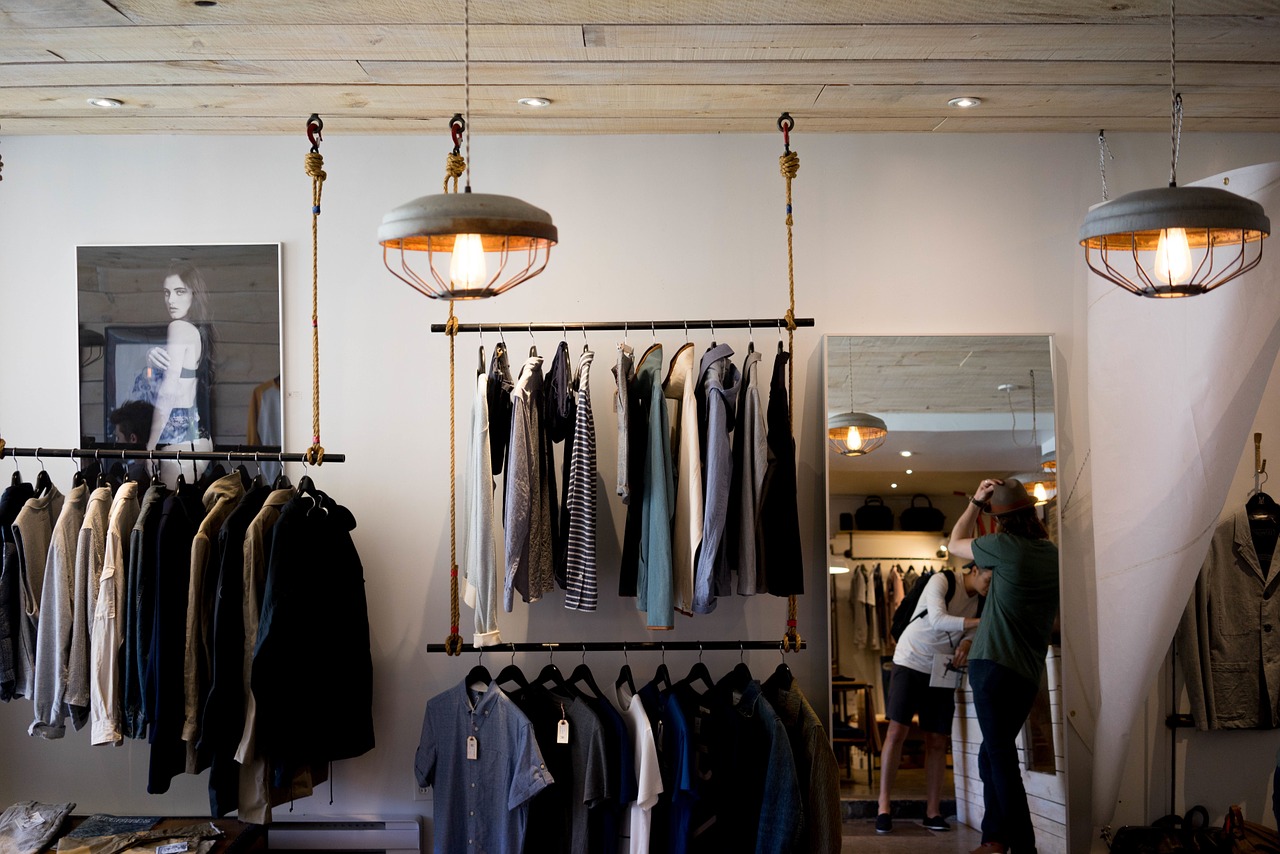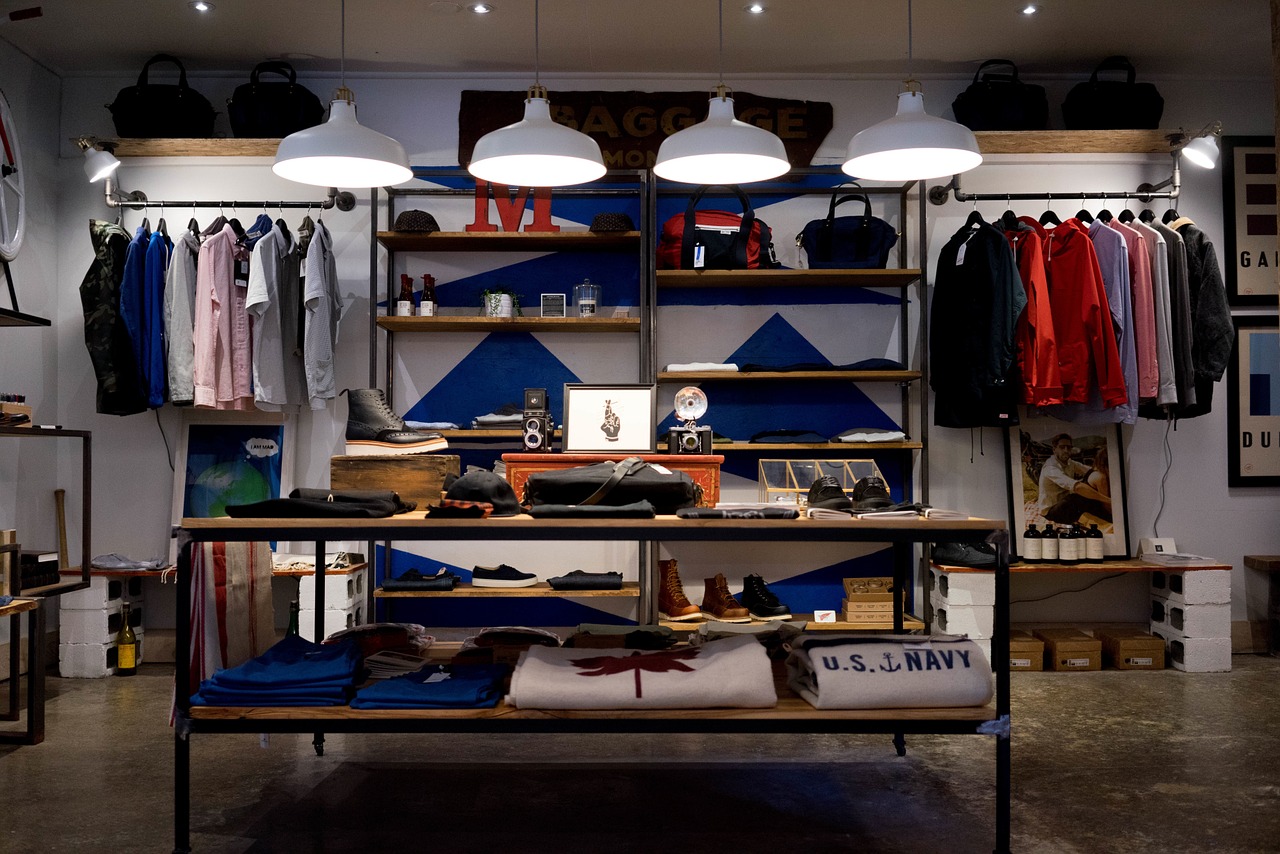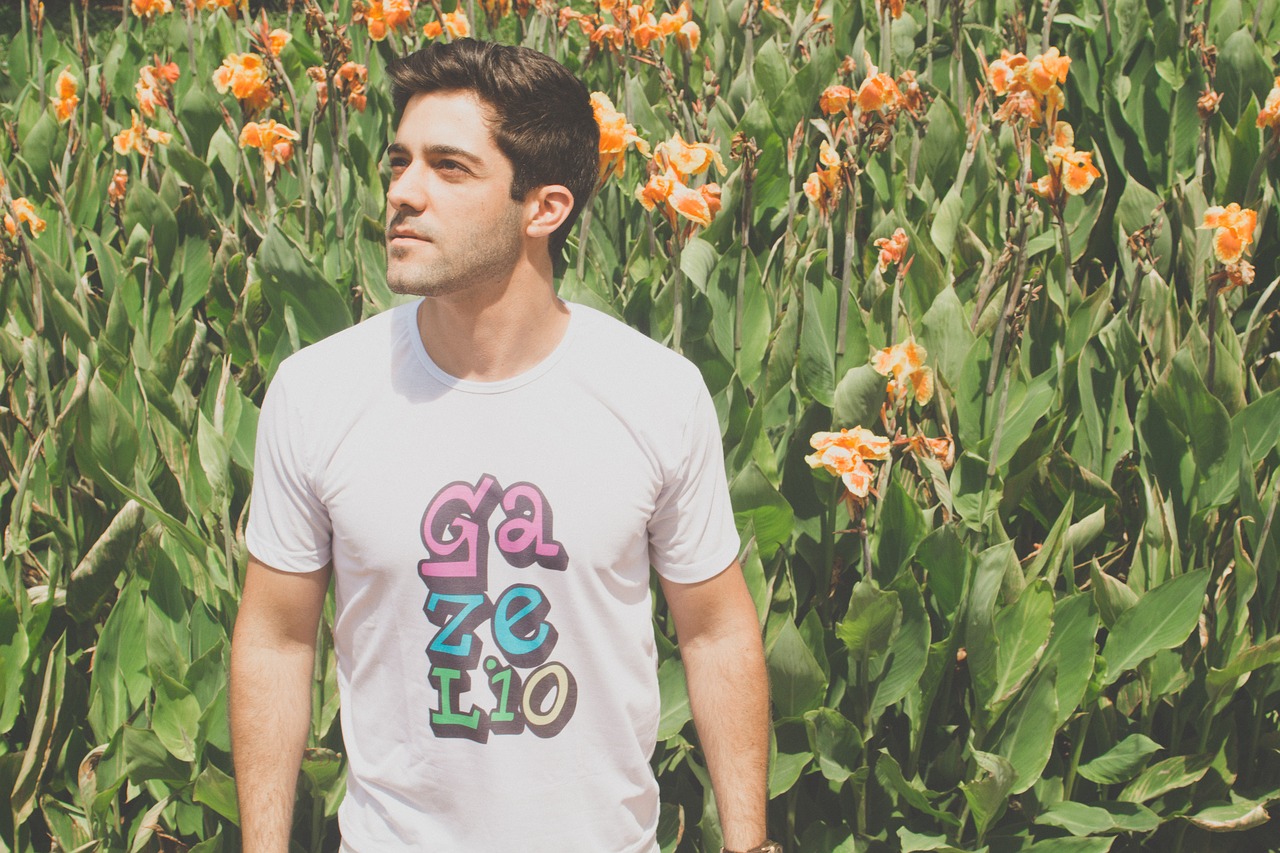
Get Your T-Shirts Stocked in Retail Stores – Offline Gold Mine
While it may sound like a crazy idea in 2016, you should really consider getting your shirt designs into traditional brick-and-mortar stores. I know; this defeats the whole purpose of creating your very own online empire.
However, getting your designs into physical stores does not mean opening your own. In fact, selling shirts in stores should not be your main stream of revenue at all, but an additional stream. Better still, it’s a great way to obtain a new field of exposure and could help you become a bonafide brand.
Probably the easiest transition to make after coming up with a killer design or two, or even a specialized line of shirts, is to target specialty shops. Some clothing store brands target urban clothing designs specifically, giving buyers a chance to find cool, hip, and unique designs that they just can’t find anywhere else, even online. Their stores are usually the dead center of a major city or hub, giving your brand a huge audience to sell to.
However, before you start knocking on storefront’s doors, here's a number of key ideas in mind:
Tips For Turning Up Prepared
1. Know Who You’re Pitching To
If you have a wild, crazy, “out there” style or set of designs, it’s probably not the best idea to start out at the stores your mom shops at. If a store’s line of clothing is centered around minimal designs or crisp, clean shirts, they probably don’t want anything too bold or artsy on their shelves.
On the other hand, if you’re trying to get in with an edgier store or brand, make sure your design has enough going for it that it would be a good fit. If your shirt stands out (and not in a good way) compared to what they’re already selling, you should probably talk to someone else. Even if they’re nice and allow you to put your designs up, there’s a fairly good chance that it won’t sell well with their buyers.
2. Don’t Get Lost in the Sauce
While it’s understandable that you want your shirts to be competing around what’s currently “in” fashion-wise, it isn’t a great idea to just simply add to the white noise. If you’re pitching your line to a store, they don’t want to just see what’s current and trendy. They want to know that you’re typical design process and style melds with theirs. Show them bold and original; they may not love it, but they will at least respect it.
If 100 designers are all making the same thing, it doesn’t matter if you do it better. Stores want to know that you’re going to come up with shirts that they can always sell. If your designs run on the more risqué side, is this particular store going to carry it? Are your designs really original, or are they just different takes on current designs? For instance, are you just featuring a different dramatic picture of a city skyline rather than just your typical San Francisco or New York picture? You need to show range while also showing you meld with their brand image.
3. Always Show Up Prepared
Just as you should show up to a job interview with a résumé or a portfolio, you should probably bring in some sort of a tangible sample with you when you’re pitching your designs. You don’t have to carry around an arm full of printed shirts, but you should have a few of your best designs to hand. While a book full of designs works well, having the designs you’re especially proud of printed out on a shirt could really increase your chances of sealing the deal.
If you want to go full Shark Tank, you could even bring someone along to model your shirts. The downside is you would need enough designs to showcase your range, and they may not want to spend the time waiting for them to change shirts.
Questions to Ask Yourself
1. Is Your Brand Name Mature Enough?
It’s one thing when you’re selling your own shirts. Your brand can have any name you want, and it doesn’t matter because it’s the only brand in stock. But when someone else is going to be physically hanging your shirt next to big name designers, is your brand’s name going to actually work?
If your brand name is trying too hard to be edgy or urban, it’s not going to work well with “real” brands that have names that sound like actual fashion designers. If your brand name uses lingo that is currently en vogue, then you better believe they’re going to pass on you. No one wants to see “Swag Shirts” in ten years.
Honestly, your exact brand name (or something uncomfortably close) is probably already being used somewhere. While you aren’t necessarily in trademark violation, you may wind up having to pay them licensing fees for your name once it goes into a physical store. This may actually be a good time for you to rebrand yourself.
2. Is It Even Worth Selling With Them?
In order to be a viable option for partnering with the store, you’re going to be expected to sell to them at a low price so they can tack on their percentage. In the end, if they’re only going to make a couple of bucks off of each shirt sale, are they going to want to pursue the partnership long term?
Another question to answer before spending too much energy getting your shirts in their store is just how many units would they need? If it’s a small trendy boutique, they may not be willing to buy the number of shirts you need them to. Other larger stores may want way more units than what you’re able to give them.
Finally, are you going to be able to make your costs work with an agreed number of units? For instance, if they’re going to mark up your shirt at $30 and you’re still using as cheap of fabric possible, buyers are probably going to skip your design for something of a better value. And if you wind up spending too much on materials, you’re looking at potentially losing money rather than supplementing your revenue stream.
3. Do People Know What To Expect From You?
Chances are if someone buys your shirt in a store, they’ve either purchased from you online, or they’ve compared your design online before buying in the store. Unfortunately, if they’re snooping for info, they may see that you’re not performing real strong at the moment. They may have a hard time paying full retail price if you aren’t even moving as many units online as you have in the past.
Or, as another way to confuse them, if your prices are wildly different online, why would they pay the higher amount in store? As long as you can consistently show that you’re a strong contender with relatively the same pricing, they will have an easier time taking a chance on a purchase.
Final Considerations & Closing Deals
1. Keep an Eye Out for the Bigger Store Names
It may seem that when selling in physical stores you should always go big or go home. However, getting on the shelves with bigger brands may actually wind up shooting you in the foot later. If a small specialty store sees you on the shelf of a larger retailer, are they going to want to sell the same thing their competitor is? Are they going to give you the “selling out” lecture?
And are they going to have the confidence that they need to stock your shirts? After all, a large retailer can probably move far more units at a fraction of the cost. A smaller store, at the other hand, may struggle quite a bit to do anywhere near the same amount of volume or sales figures.
2. Small Details Still Matter
While selling online may give you the freedom to just simply stuff a shirt into an envelope and call it “packaging”, your shirt is going to need a little extra flair when it’s sitting on the shelf along with everyone else.
Everything about the shirt, from the design to the wash instruction tag, to even the price tag, has to have some sort of personality and style to it. If any part of the shirt looks boring, it’s going to make the entire shirt seem boring in the shopper’s mind. When your shirt looks like a professionally designed brand, you’ll have an easier time making it a self-fulfilling prophecy and become a big name.
3. Sweeten the Deal
When pitching to a store owner to carry your brand, the customers aren’t the only ones taking a chance on you. You’re probably going to have to give them some sort of incentive, such as offering a full refund on a certain amount of unsold shirts.
Chances are, they aren’t too inclined to take all the risk on a designer they’ve never sold before. By showing you’re willing to work with them, they will be a little more willing to agree to carry your designs.
4. Focus on Marketing to the Owner
Just as you spend time marketing to customers, you need to market to your potential new partner. If you do decide to put together some form of portfolio, it would be a good idea to have the models look like real models with fresh, professional-looking hair and makeup in tasteful photo shots.
If you have live models, make sure they look the part and not just like they’re your sister or friend who happens to be wearing your shirt. If using a visual media form, make sure the production values are up to snuff, yet appropriate. And finally, if you’re going to depend on your website, make sure it looks like an actual website from a real designer.



